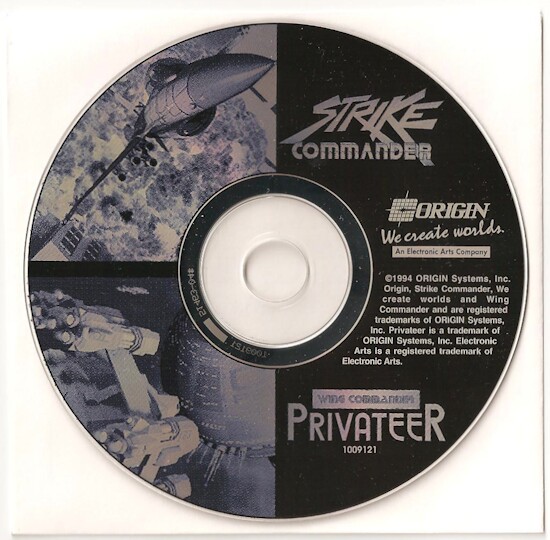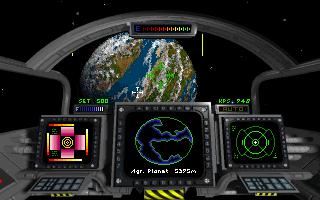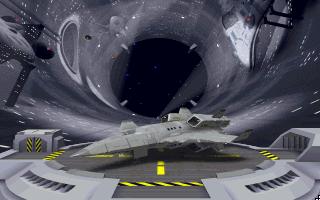
Actual Game
Privateer
|
The Game
Privateer
The year is 2669. You are an experienced space crewdog who has just inherited an obsolete Tarsus scout/merchant ship from your grandfather. With it and your few remaining credits, you decide to seek your fortune in the frontier Gemini Sector near the borders of human and Kilrathi space. Before your first deal, you are attacked by roving pirates. Being the hotshot pilot you are, you turn the tables on them. One of your missile shots goes awry, hitting a dormant object. It comes alive with an eerie green glow, and moves silently off. So begins Privateer.
In Privateer, the player is free to explore the Wing Commander universe by taking on the roles of merchant, mercenary, smuggler and/or pirate. The Gemini Sector represents the vast game area behind the front lines in the Kilrathi/Confederation war. Each of Gemini's quadrants is teeming with solar systems, the catlike Kilrathi enemy, pirates, asteroids and other hazards. In turn, most solar systems are dabbed with their own planets, space stations and jump points to other systems. A quick count reveals 64 systems ripe for a privateer's picking.
Your view for the action is the best seat in the house, Origin's improved space combat engine. While still relying on bitmaps, images are now sharper, details are much more abundant, and pixelation is greatly reduced in comparison to the WC series. Space stations and planets, however, are decidedly 2D in that they can't be circumnavigated and their light sourcing and shadows remain constant. More effective 3D can be found in the various ships and loose-floating cargo items, which reveal a surprising amount of close up detail. These combine to create some of the most gorgeous visuals ever to be viewed through canopy glass. Privateer also flaunts some stunning space station interior renderings and planetside city views: evidence that Origin had great fun with the 3D development system it used to create the game.
The view is immediately cramped by the hand-me-down spacecraft your character is given to start the game. Allowing only a peephole through which to blast the baddies, it provides a strong incentive to upgrade your ship to one that sports a more panoramic canopy. New ships and equipment are expensive, so your first priority is to scare up some "credits", seemingly science fiction's standard monetary unit. Your privateer can hustle credits by taking on a variety of missions available through computerized job bank terminals at every space station. There are also merchant's and mercenary's guilds through which you may sign up for more lucrative missions specifically geared toward your expertise in either trading or dogfighting.
The combat interface and flight model carry over from the Wing Commanders and are very effective. Pushing the joystick in the direction you wish to travel takes you there - no banking is involved. Power management features borrowed from Lucasfilm's X-WING have been added to the game's controls. While power cannot be transferred wholesale from one system to another (say, from guns to shields as in X-Wing), the shields can be set for a certain power drain level to allow faster weapons recharge. Guns can also be toggled off to allow other systems to have better access to your ship's power.
In short, Privateer will keep you on your toes. There is much to be accomplished but it will take plenty of dedication and piloting skills to emerge victorious.
Righteous Fire
In Righteous Fire, you're once again transported to the seamy side of the universe, where you discover a fiendish plot that threatens the order and prosperity of Gemini Sector. Whether you're a merchant, pirate or mercenary, plenty of action awaits if you're willing to risk all you earned in Privateer.






